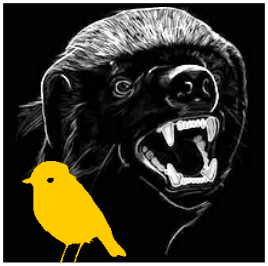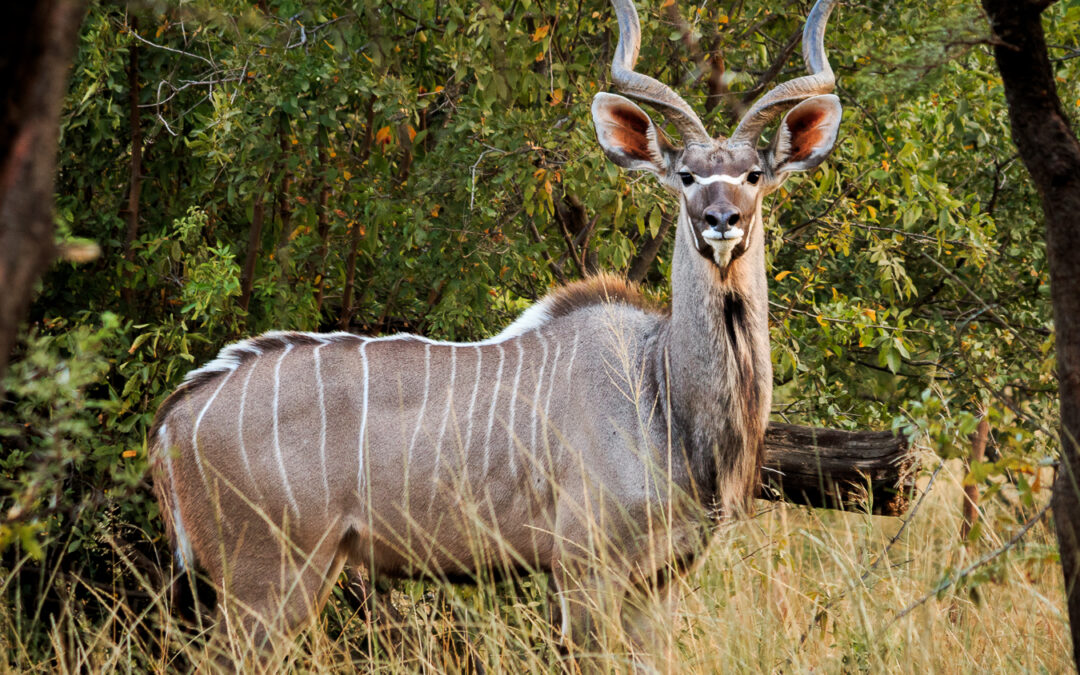Dietary specialisation is the clue to why greater kudus – despite exposing themselves in sparse dry vegetation – retain disruptive colouration typical of forest animals.

Prof. Mumblebard claims: “Greater kudus are descended from forest-loving ancestors and retain disruptive colouration in the form of striping on the body. This may seem incongruous in view of their penetration of semi-arid environments where they survive without drinking water for several months at a time. However, greater kudus are active by night, when their stripes would hardly be visible to predators anyway. So natural selection is blind to this striping, which can be dismissed as merely vestigial.”
Robin and the Honey Badger respond: “Greater kudus are morphologically and behaviourally adapted to sparsely vegetated landscapes with sweeping visibility. Their eyes are wide-set, their legs are exceptionally long, and their withers are higher than the rump, in keeping with diurnal activity and extensive roaming in dry landscapes. Their odd retention of body stripes – a feature usually associated with animals hiding in dense vegetation in wet climates – is explained via trophic adaptation. Greater kudus depend for food on the foliage of tall shrubs and they forage by day in partial shade. Compared with their forest ancestors these mobile, nomadic animals are very exposed. Yet, when greater kudus stand next to their large food plants, their body stripes retain a disruptive effect which hides them from predators. Striping thus remains a disguise in surroundings bright enough to reveal other large animals. As an indirect result of their dietary specialisation, greater kudus remain effectively undercover in otherwise open habitat and their colouration remains fully adaptive rather than being an ancestral accident.”

Please join us here at the Bio-edge with your own comments. In the discussion below we encourage links to any evidence supporting either Prof. Mumblebard or Robin and the Honey Badger. Illustrations are welcome but please cite all sources or we may be forced under copyright to delete your comment.
***
Featured image: By StormSignal from Magaliesburg, South Africa (CC BY-SA 2.0, Kudu)

